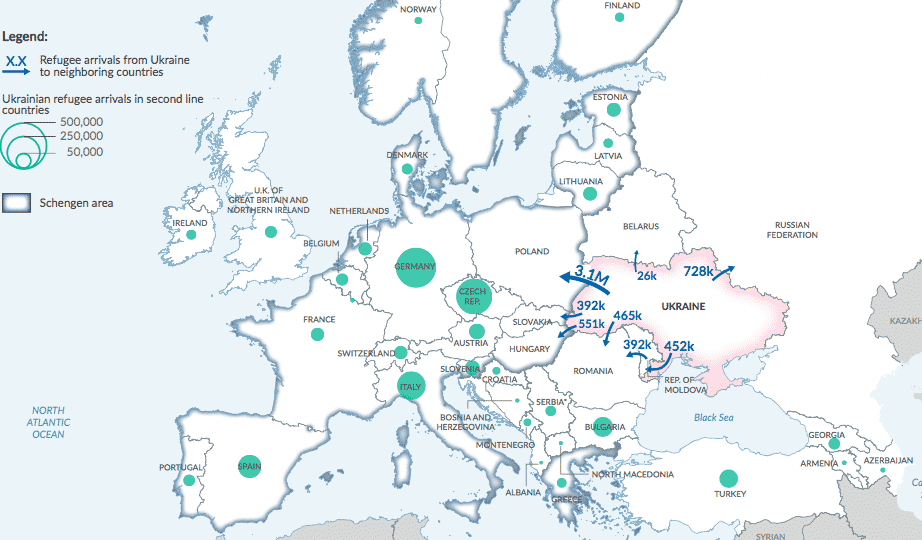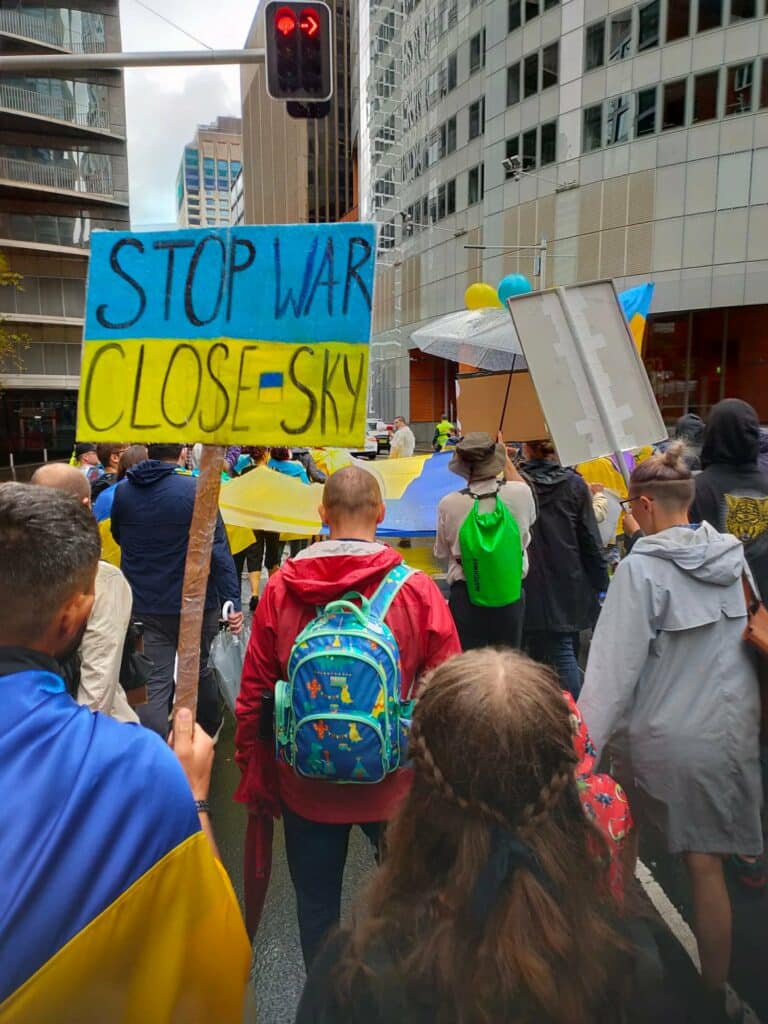Millions of refugees have fled Ukraine since the Russian invasion of February 24th, and thousands of them have made the long journey to Australia. Alongside the millions of dollars Australia has contributed in military and humanitarian aid, Australians are doing their best to support Ukrainians on our shores. Still, humanitarian organisations believe the government should be doing more to support refugees – Ukrainian and otherwise.
The UN believes over 12 million Ukrainians have been forced by the war to flee their homes, with close to 6 million fleeing to foreign countries, and 6.5 million more internally displaced. The vast majority of refugees have been taken in by neighbouring Eastern European countries, like Poland and Romania. But a handful thousands have trekked some 15,000 kilometres to land in Australia.

Temporary Humanitarian Visas
The Morrison government announced in March that Australia would grant temporary humanitarian visas for Ukrainians. Under this documentation, Ukrainians would be allowed to live, work and study in Australia for up to three years, with access to Medicare, Special Benefits and full work rights.
In order to be eligible for the subclass 786 visa, one must be a Ukrainian citizen, and crucially, be located in Australia when they accept the offer. This means most Ukrainian refugees enter the country on a visitors visa (valid only for 12 months), and then attempt to transition to a humanitarian one.
The Immigration Minister’s office claims 7,200 Ukrainians have been issued visitor visas, of which 2,600 have arrived in Australia and are now transitioning to humanitarian visas. But many refugees, like 34-year-old Yevhen Kalivod, say they are “stuck in limbo”.
Kalivod arrived in Australia at the end of March, but when speaking to SBS in April, reported he had been “stressed and confused” by the ambiguity around his visa transition. “I feel absolutely horrible… no money, no house, and now I can’t find a job,” he told SBS. “People are shocked; they want clarity on how they can live here. There is no information and no direction.”
Moreso, the government doesn’t provide packages for incoming refugees to assist with food, clothing, accommodation, etc. Instead, the responsibility for this support has fallen on Australian communities. Luckily, they have more than stepped up.

Aussies Step Up
The Advertiser Foundation in South Australia raised over $90,000 in funding for arriving Ukrainians. SA Premier Peter Malinauskas pledged $25,000 to the fund, and said if the federal government expanded refugee intake, SA would be willing to take more Ukrainians.
Jasmine Straga, who sits on the board of the World Circus Federation, has helped rehome close to 300 Ukrainians in the performing arts industry. Aussie law firm Gilbert & Tobin has made a UNICEF donation of $100,000, is matching employee donations, and will give pro-bono assistance to Australian-Ukrainian organisations. Atlassian pledged $3,000 for resettlement to all employees with family in Ukraine.
It’s been truly heartening to see the response of Australians who have shown up to support a country suffering on the other side of the world. But humanitarian workers like Ian Rintoul from the Refugee Action Coalition say our government needs to be more consistent in its refugee policy.
“It is very, very opportune for the government to respond to the plight of the Ukrainians, but [it] is a very, very selective compassion…refugees from Iraq, from the Middle East, from the situation in Africa – there is a very different attitude to them. We’ve got fortress Australia. The fences are up for the vast majority of people who desperately need help.”
Cover photo: The Advertiser Foundation’s donation lunch in Adelaide.
Follow Maddie’s journalism on Twitter.
Sign Up To Our Free Newsletter